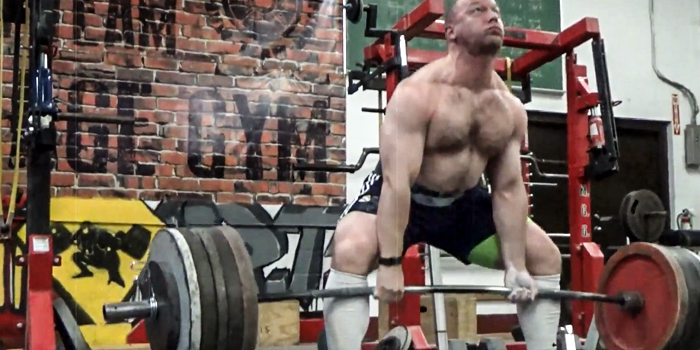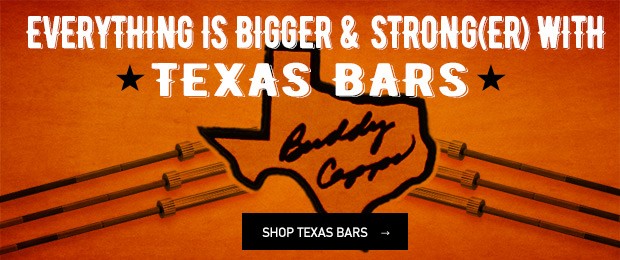
Some deadlifters prefer conventional, some prefer sumo, and some can pull equally well with both. But what if you are a deadlifter who isn’t comfortable with either? Perhaps hybrid deadlifts would benefit you.
Robert Southey wrote the famed fairy tale "Goldilocks and the Three Bears." You know the premise: Goldilocks, a little girl, basically a young future home invader, trespasses onto the three bear’s property and tries out all their stuff, such as their beds, chairs, and food. As she is a little bit of a prude, she tries things until she finds the item that is “just right.” We use this fairy tale for all kinds of other things. Planets that are in the Goldilocks Zone are ones that might be “just right,” as they are a certain proximity to a star, thus “just right” for the potential for life.
WATCH: Sumo Deadlift Technique for CrossFit Competitors and Weightlifters
In powerlifting, specifically the deadlift, the “just right” or the Goldilocks Zone, might not be pulling conventional, nor sumo, nor even Old English Style (we rarely hear about that one anymore). So, for those lifters, what I call the hybrid sumo stance could perhaps be the best for you. It can at least be something for you to try on for size.
The hybrid (anything derived from heterogeneous sources, or composed of elements of different or incongruous kinds) is just that: it is like the sumo pull in that the hands are inside of the legs, but has traits like the conventional in that the feet are far closer together and the forearms and calves when starting the pull are much, much closer together than the traditional wide stance sumo.
If you are a squatter whose squat stance is not ultra-wide but wider than a close stance, the hybrid sumo stance might also be for you. I say that because of the stance of the feet. If you were just to look at the lifter from the waist down who used a moderately wide squat stance and also looked at a hybrid sumo deadlift from the waist down, the stance for both lifts would look the same. Because of this, there is tremendous carryover in training. Those training the squat with a moderate stance will help the hybrid sumo and training the hybrid sumo will help the moderate stance squatter. This is not the case for wide stance squatters who pull conventional. They are two very different stances.
The hybrid stance is also great for this huge group of raw lifters emerging onto the scene. With 90% of the sport now raw, not all of that 90% is going to go conventional, and a wide sumo like you would see from the traditional geared lifter might not be the best stance for the raw puller when it comes to pure leverage and lack of support material in the hip and groin regions.
To illustrate this, we put together some footage of one of our hybrid sumo raw lifters, Robert Bain. A little background on Robert: Robert was a “softer” 242-pound lifter and talked a lot about nutrition and the like. We cleaned up his diet and slowly got him to a tight 220 pounds. He is now growing with a cleaned up diet into the 242-pound class and as a roughly 235-pound tighter raw lifter he has a 725-pound (gym) deadlift. His squat stance and hybrid deadlift stance are almost identical, so there is a big transfer and he is getting twice the training bang for his buck. Additionally, Robert has other training days spread out where he pulls conventional, mostly early on in the training cycle.
This (sumo and conventional training both in one session) is a training method we borrowed from the great Ernie Frantz. Ernie told me the story of he and Ed training pulling sumo (as they were training for the famed Hawaii meet). They would pull sumo, then after the other lifters left the gym, Ernie shared that he and Ed then went back to the platform and then did some conventional training. Not every lifter can do two full training sessions, one sumo and one conventional. Ernie and Ed are true powerlifting legends and put together in a way that we mere mortals could only wish for. That said, we put the two styles on different days, with a lot of days in between. Nonetheless, training both the styles, at least at the start of a long training cycle, has proven to be beneficial.
The training footage in the video is Robert pulling raw hybrid sumo. Note in the video the following:
- The close proximity of the arms to the calves
- The head-up position starts the pull
- The shins, perpendicular to the platform at the start of the movement
- The toes at a 60-degree angle
- The chest at 70-degree angle with the rear end slightly above parallel
Not an exclusive thing to hybrid sumo but an overall aspect of the deadlift to keep in mind while training is the downward movement. Each rep Robert pulls is placed on the platform in a way where the plates lightly kiss the platform, either for another rep or to complete the lift. Although this doesn’t sound hardcore like an awesome slamming of the weights, the goal is to actually be powerful rather than just sounding powerful.
For the new lifters out there, there are not white lights for sounding like you are strong. The reality is, the controlled down helps build the ability to pull big off of the floor. Also of note, Robert will hold that bar at the top (just like you have to at a meet). Lots of newer-to-the-sport lifters hit the top and then let the bar just drop down quickly. Those lifters are basically just training half of the lift. Said another way, if you can hear the deadlift hit the floor, you are leaving power on the platform. Put your ego in the drawer and get all you can out of your pull.











1 Comment